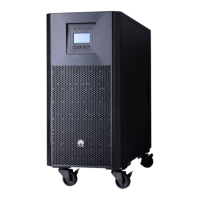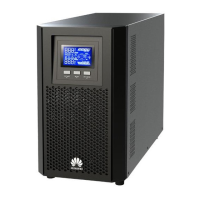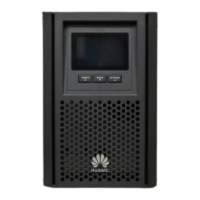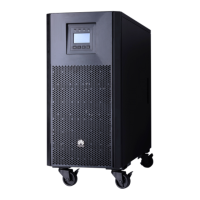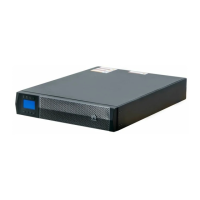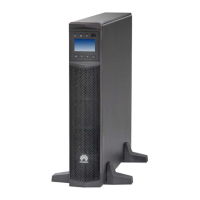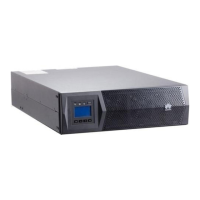Ambient temperature: 0–40ºC
Humidity: 0–95% RH (non-condensing)
• Input voltage for standard version: 220
V AC, 230 V AC, or 240 V AC (single-
phase input); Input voltage for
professional version: 208 V AC, 220 V
AC, 230 V AC, or 240 V AC (single-
phase input).
Output voltage for standard version:
220 V AC, 230 V AC, or 240 V AC
(single-phase output); Output voltage
for professional version: 208 V AC, 220
V AC, 230 V AC, or 240 V AC (single-
phase output).
If the humidity and temperature
are abnormal, check the air
conditioner status.
If the input voltage is abnormal,
check the power grid status and
input cable connection.
• If the output voltage is abnormal,
check the UPS running status
and check whether an alarm is
present.
Check that all units are operating properly
by observing the status icons on the LCD,
all operating parameters are within their
normal ranges, and no fault or alarm
information is displayed.
If an alarm is present, rectify the
fault by checking the device status
and parameters.
No abnormal noise is generated.
Check where the abnormal noise
comes from, especially fans, input
and output transformer (if
configured). If the problem is not
resolved, contact
Wipe the cabinet surface using a white
paper and the paper does not turn black.
See related parameter setting descriptions
in
UPS2000-A-(6 kVA-10 kVA) User
Cables are intact and do not deteriorate
or damage.
If a cable is damaged, find the
reason and apply protective
measures such as rodent
Regularly check and record the
adding and removal of loads.
Categorize exceptions and alarms.
Analyze and export alarm analysis
report.
Routine Maintenance
1
UPS Monthly Maintenance
This section describes the monthly maintenance for the UPS and batteries. For more detailed
maintenance information, see the
UPS2000-A-(6 kVA-10 kVA) User Manual
.

